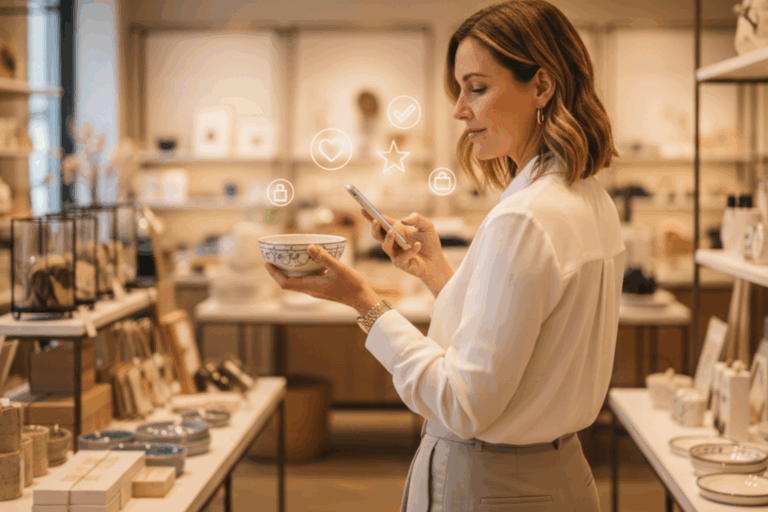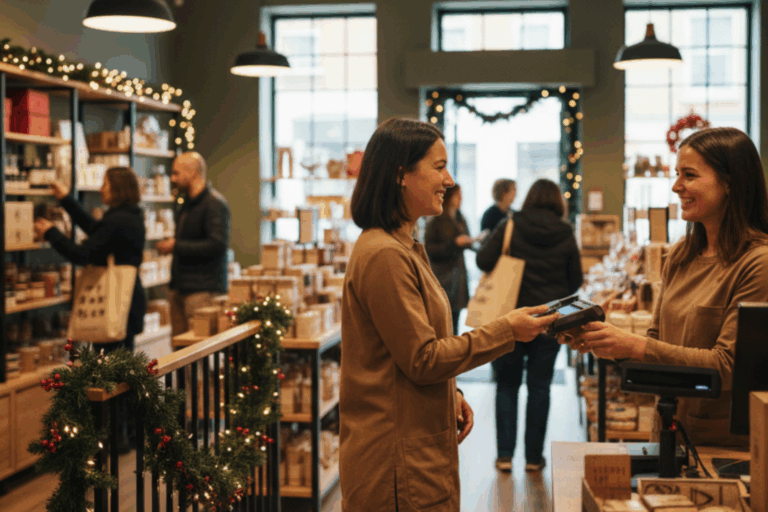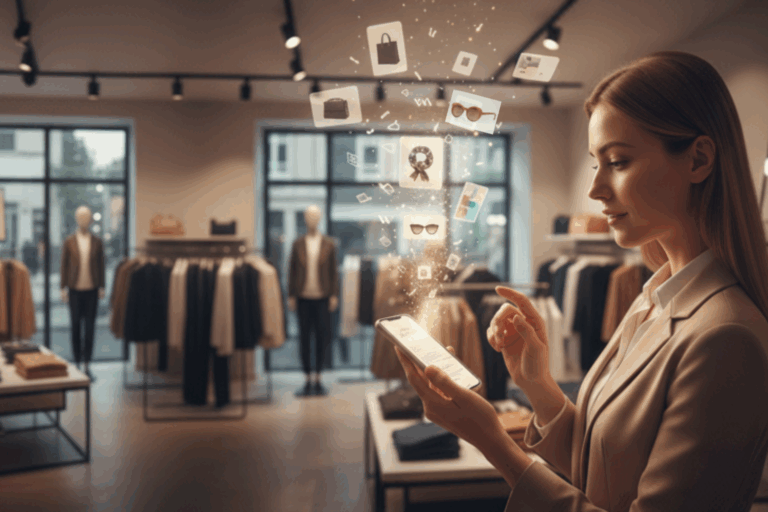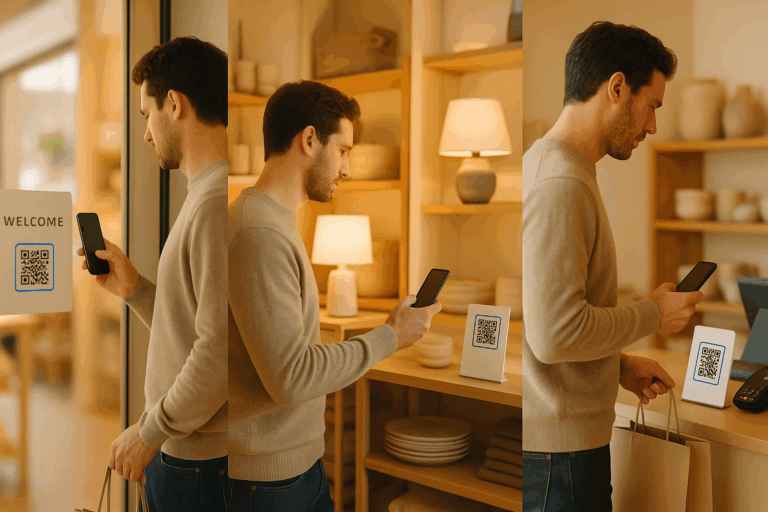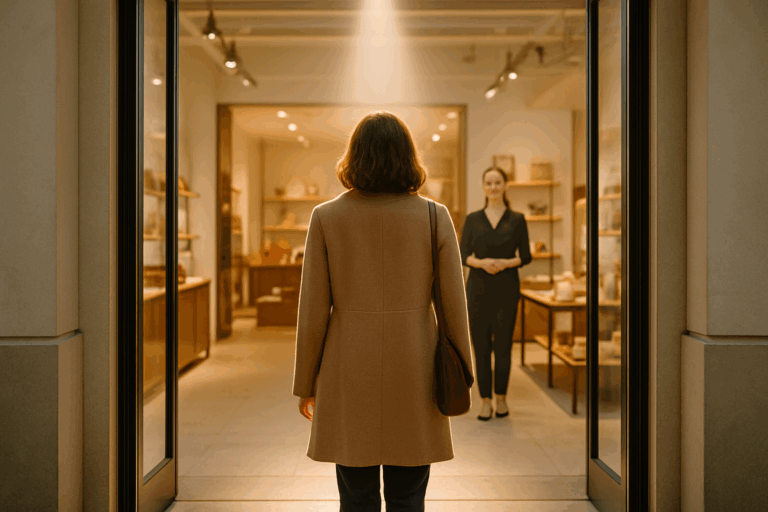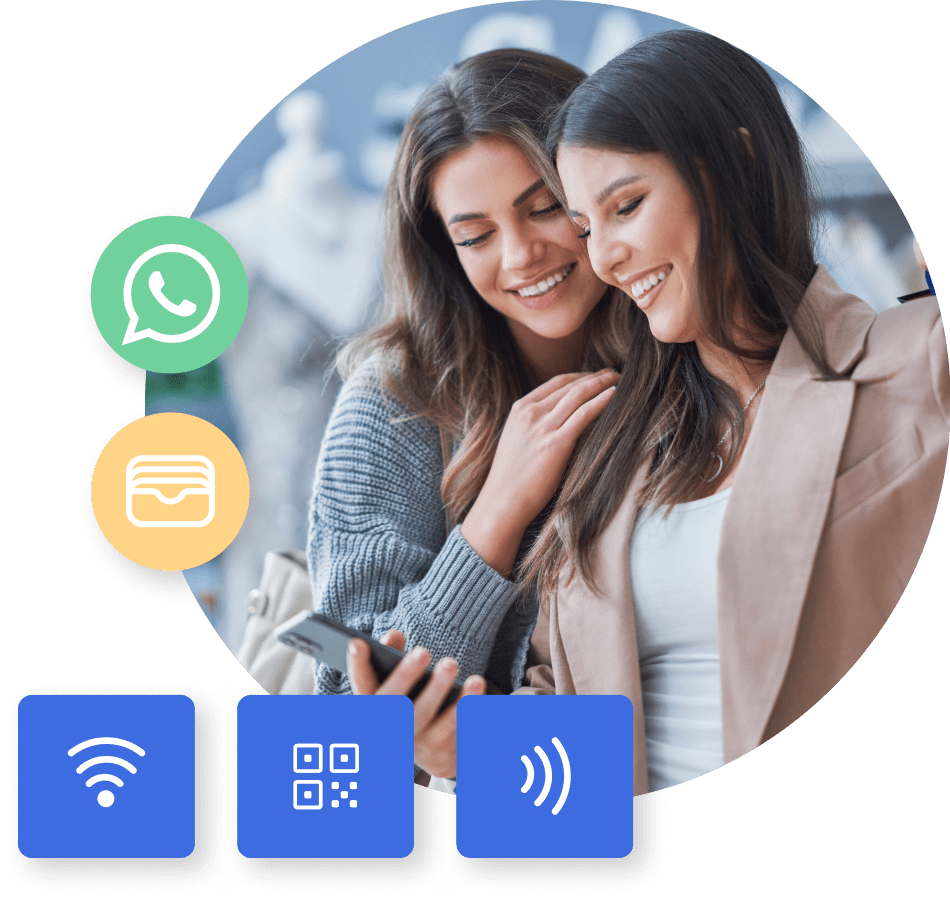Personalisation in retail is a way to always ensure excellent customer service and a great customer experience. Having the expertise in the company’s retail offerings, along with a deep and meaningful understanding of the customers that they engage with, allows retailers to predict and know exactly what the customer wants – sometimes before the customer even does.
As a trend, this will only become more and more ingrained throughout the whole retail industry and shopping experience. In-store, by using digital touchpoints more frequently during the entire shopping cycle, every customer will feel like they have their own personal shopping experience.
From tailored assistant, to ease of finding items, digital touchpoints will continue to improve upon a seamless shopping experience overall.
What do Digital Touchpoints In-Store Look Like?
The term digital touchpoints is both a simple one, but also something that takes many different forms. This could be something such as an interactive kiosk at the door of a large department store. Customers can walk in, use their mobile loyalty card and be given specific details about offers on their favourite products, or where to find the matching items to something that they bought previously.
In fashion, this could look like smart mirrors in changing rooms, that allow customers to request different sizes, find similar items or even get styling tips from what they are trying on. Augmented reality and mobile apps can further incorporate this personalisation, but without the need for additional hardware in store as well.
The ultimate goal of any digital touchpoint in store is to improve and enhance the customer experience through personalised information, product recommendations, and interactive features.
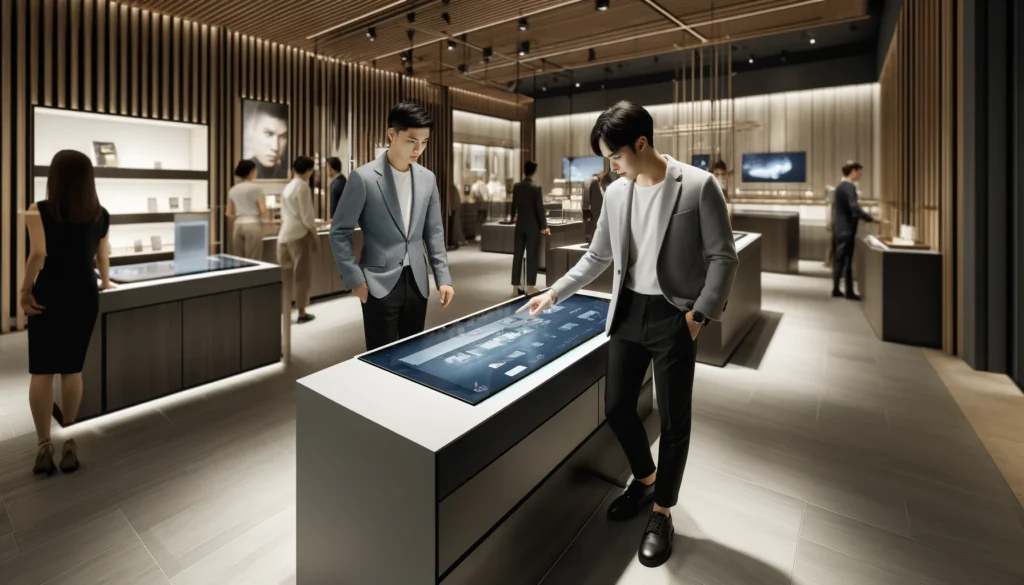
The Customer Journey with Digital Touchpoints
From the moment a customer walks into the store, the opportunity is there to utilise digital touchpoints to guide them along their purchasing journey. This can be really obvious to the customer, or can actually be delivered incredibly subtly as well.
Before Purchase
Product Information and Availability
Digital kiosks and apps can provide detailed product information, availability, and recommendations based on customer preferences and past purchases. This means that the customer can find out quickly and easily what the item they may need is, or even if they have it in stock. What’s more, if they don’t have it in-store, it makes it easier for the customer to order it in-store for delivery or pick up, ensuring that they don’t have to go to a competitor.
During Product Selection
In-Store Navigation and Assistance
Customers can use a mobile app or in-store digital kiosks to find products and real-time assistance. This can be done with a few clicks, but can also match up the customer to their own preferences and make sure that it matches exactly what they need.
Augmented Reality and Smart Mirrors
The enhancement of AR or smart mirror tech can allow customers to try things on virtually, such as clothing or even make up, without needing to try things on. This is great because it can help customers who are time poor, or maybe aren’t keen on trying things in-store, or even free up space in-store from large changing rooms or huge beauty counters.
Personalised Interactions
While in-store digital touchpoints are an excellent way to help customers while they shop they can also enhance the customer experience and service given by retail staff. Armed with a tablet and access to customer profiles and purchase history, a salesperson can offer more targeted information to customers who may need additional guidance.
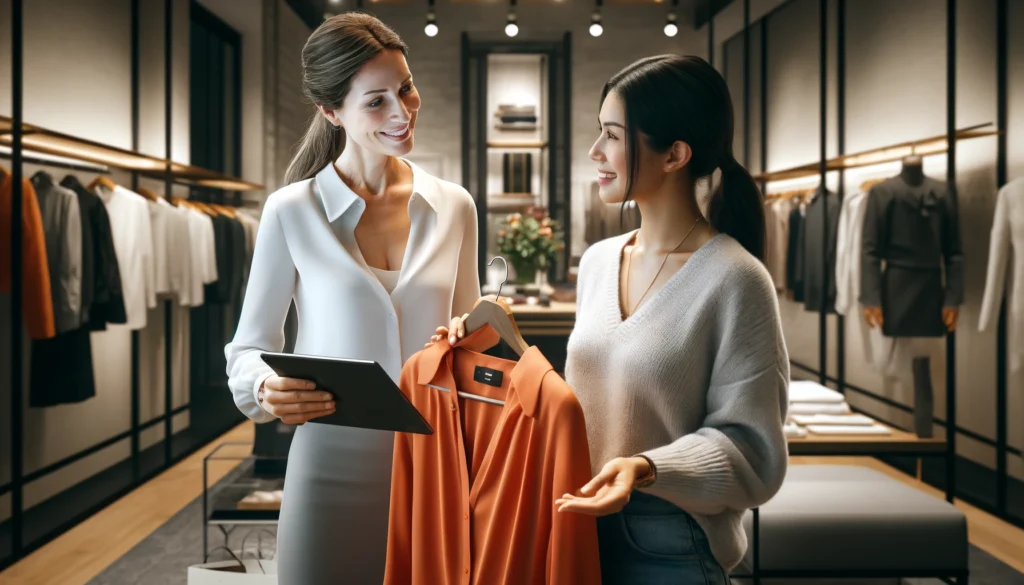
During Checkout
Digital Receipts
refive’s digital receipts are particularly designed to enhance customer engagement by including personalised special offers, coupons, and product recommendations directly on the receipt. Each digital receipt is tailored to the customer’s shopping history and preferences, ensuring that the promotions and recommendations they receive are relevant and appealing. This level of personalisation not only enriches the customer experience but also encourages further interaction with the brand, driving repeat visits and loyalty.
Self-Service Kiosks
Customers can either choose to go to a traditional PoS, or instead opt to go through a self-service checkout. These kiosks can also enhance personalisation by offering tailored recommendations based on the customer’s previous purchases and profile. This can be actioned by the customer scanning a loyalty card, and could take the form of pop-ups offering complementary products, highlighting special discounts, or even personalised coupons for their most frequently purchased items. This makes the checkout process more efficient, but also offers a personalised service that can lead to repeat purchasing and higher basket values.
After Purchase
Follow-Up Communications
Personalisation can be ramped up even further, continuing to nurture that ongoing relationship, with the post-purchase communication. This can come in the form of app notification, or automated emails. These can provide confirmations, product care instructions, and recommendations for complementary products.
Feedback and Reviews
Digital touchpoints also offer an easy collection of customer feedback and reviews, helping retailers improve their offerings and customer satisfaction. A customer can use an in-store touchpoint to report on great customer experiences, and even give feedback before they leave the store while it is fresh in their mind.
Loyalty Programs
Loyalty programs are one of the best ways to engage with your customers after purchase, and customers love them with 83% of people stating that being part of a good loyalty program will influence their decision to buy from a brand. A loyalty program can be multilayered, but typically the easiest way to engage with customers is by sending them personalised offers, rewards, and points for their purchases.
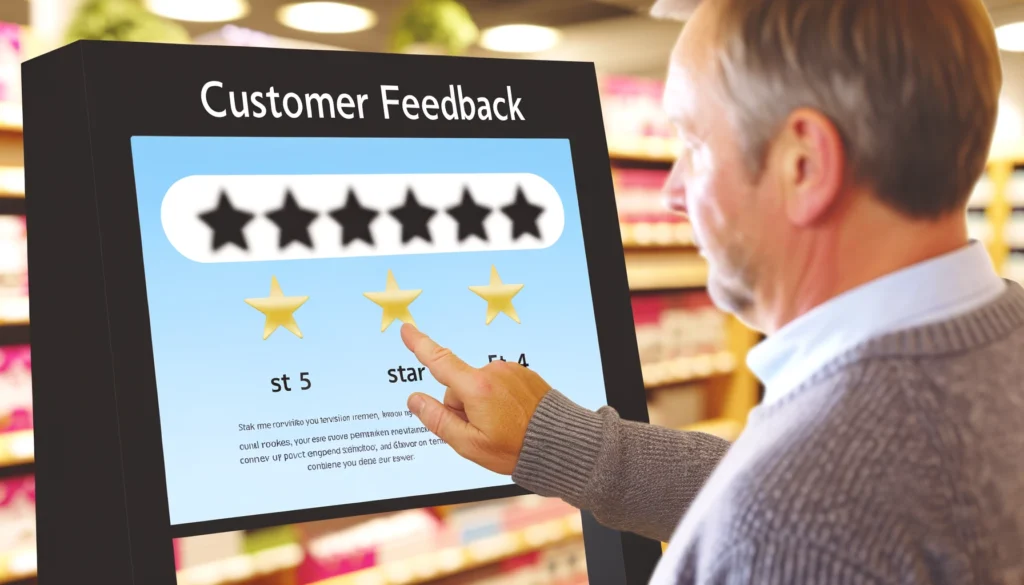
Why In-store Digital Touchpoints?
Touchpoints, in general, are really important because they offer a means of communication between customer and retailer. The more touchpoints there are, the better the communication is likely to be between the two, and the customer will feel like they have the chance to get advice and give feedback easily.
With in-store digital touchpoints, retailers are able to enhance the in-store experience to match the digital online experience as closely as feasible. This is crucial in this era where many customers expect to have everything they want at their fingertips. If a retailer struggles to offer this level of positive customer experience in-store, then they lose the chance to engage with, and nurture, that relationship further. It can even lead to the customer going to a competitor that they deem will fulfil their needs.
Other things that are important to consider when thinking about the why, is the importance of the data. Data is dynamic, it changes and it can provide the clues to what will help drive the business forward. Whether the goal for the retailer is to grow, or even just maintain, data capture will offer the keys to this. Also importantly, when you strive to create a good positive experience for the customer by using data correctly, the average customer will spend more and is more likely to remain a loyal customer.
Digital Touchpoints are a Strategic Investment
In-store digital touchpoints are not a gimmick, but a great investment into the future of a retailer’s brand and shopping experience. Bringing digital touchpoints into physical retail stores offers many benefits, and also helps to bridge that personalisation gap that many retailers face between the online shop and offline.
To bring together a truly omnichannel approach requires a seamless collaboration between the two. You can achieve this in a number of ways, but using a tool such as refive easily marries these two together. It can also integrate with your current retail tech stack, and offer easy fixes with the challenges of data privacy, system integration, and staff training to ensure successful implementation.
By focusing on digital touchpoints in-store, and generally increasing the customer experience overall through strategic implementation, in-store experiences can become exceptional, driving customer satisfaction and business growth, all of which can be driven in part by refive. Get in touch today to find out more.


